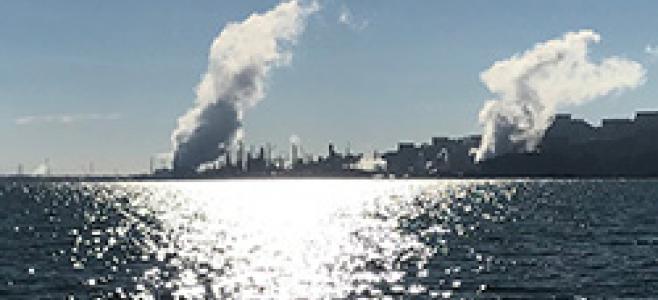Scientists at the National Oceanic and Atmospheric Administration (NOAA) have issued a report on the threats of climate change to 28 key estuaries around the nation. The agency’s research found that San Francisco Bay is one of six estuaries most sensitive to the effects of climate change.
Estuaries are bodies of water where freshwater from rivers and streams flow into an ocean. NOAA, the federal agency that manages coastal and marine ecosystems, examined the impacts of climate change on the 28 estuaries that comprise the National Estuarine Research Reserve System (NERRS), which are designated as high quality and representative ecosystems, subject to a variety of environmental and human stressors.
San Francisco Bay is part of the largest estuary on the West Coast of the Americas, where water drains from the Sierra Nevada Mountains into rivers that empty into the Bay. San Francisco Bay is also considered one of the world's most urban estuaries, making it particularly vulnerable to sea level rise, habitat loss, and salt water intrusion.
The Bay’s wetlands are surrounded by dense urban development, limiting the ability of wetlands to expand or migrate inland. This means much of the Bay’s remaining wetland habitat—including salt marsh, mud flats, and intertidal habitat—could be lost forever as they are submerged by rising sea levels.
Also, as sea levels rise, salt water will travel farther up the estuary, eastward into the Delta. This could pose a risk to sensitive fish species that rely on particular salinity zones to survive.
The other two California estuaries identified as high-risk are Elkhorn Slough, in nearby Monterey Bay, and the Tijuana River Reserve, at the Mexico border. The Tijuana River Reserve is considered the most sensitive estuary in the NERRS, given its heavily developed, urbanized watershed where the water has been channelized. Elkhorn Slough's magnificent wetlands are considered highly vulnerable to sea level rise and other climate risk to the ecological resiliency of its ecosystem.
Read more at http://www.noaanews.noaa.gov/stories2013/20130807_nerrclimatereport.html.


